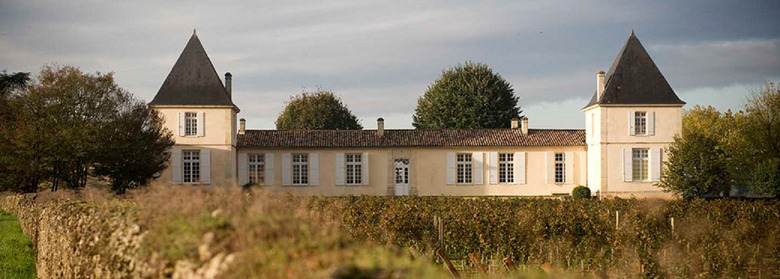Château Climens Proprietor Pairs Her Sauternes With Cheeses, Seafood, And More
Global wine production in 2017 fell to a low not seen in seven decades. Extreme weather events occurred in Italy, France, and Spain. In France, a severe frost came in April when the vine shoots and buds had already made their appearance. Then came the heat of summer, which sent French wine production totals plummeting by an overall 19 percent.
These conditions hit Château Climens, in Bordeaux's Sauternes region — a property many wine experts consider second only to the iconic Château d'Yquem in quality — particularly hard. In New York recently to promote her wines, the château's proprietaire, Bérénice Lurton, said it became a question of whether to proceed with any harvest at all, as she and her crew went vine by vine seeking survivors of this terrible year.
Lurton is the daughter of Lucien Lurton, one of his ten children. The elder Lurton is a major figure in French wine, the owner of such boldface names in the Médoc as the châteaux Brane-Cantenac, Desmirail, Villegeorge, La Tour de Bessan... and the list goes on. He acquired Château Climens in 1971, also a year of crisis for Sauternes. The property has been owned by only five families, remarkable for a parcel whose story dates back to 1547. In 1992, he retired from the active management of his properties and gave each of his children stewardship of one of them. He turned Château Climens — whose extremely high standards he was determined to maintain while bringing it into the modern world — to his then-22-year-old daughter, Bérénice.
Under her direction, the entire vineyard was converted to biodynamic practices in 2010, with chemical sprays replaced by plant infusions, including tea made from chamomile that grows alongside the vines.
The Sauternes appellation is made up of only five small villages in Graves, 25 miles southwest of the city of Bordeaux. Its wines are made from grapes that have been affected by a fungus called Botrytis cinerea, also known as "noble rot." This causes the grapes to become partially raisined, resulting in a unique concentrated flavor. Sauternes is made from sauvignon blanc, sémillon, muscadelle, and occasionally sauvignon gris grapes — usually a blend of two or more of them. Climens, which is in the Barsac region within Sauternes (it has long been known as the "Lord of Barsac") is unique in that it uses only sémillion.
The wine itself has freshness and minerality that transcend its rich, sweet character. As it ages, it becomes deeper and darker in color. But whatever its age, it is eminently drinkable, and Lurton was in New York to prove that point.
At a tasting at New York City's French Cheese Board, four vintages each of Château Climens and its second-label wine, Cypres de Climens, were paired with eight French cheeses. A sip of Sauternes followed by a bite of buttery, salty cheese was a taste revelation. But Lurton also asked her guests to pair her wines with savory dishes, keeping a few guidelines in mind. A classic pairing is Château Climens and foie gras —sweet, flowery, and rich paired with meaty, sharp, and rich. It's a matter of finding flavors and textures that will stand up to the intensity of the wine. Fine matches can also be made, said Lurton, with components that are creamy (high-fat cheeses), salty (ham), briny (seafood), acidic (lemons), and even spicy; she is particularly fond of drinking her wine with Thai food.
All the trials and tribulations at Chateau Climens this year produced one happy side effect: Lurton had the time to take her wine on the road and introduce its glories to a willing audience, who will never think of Sauternes as just a dessert wine again.
